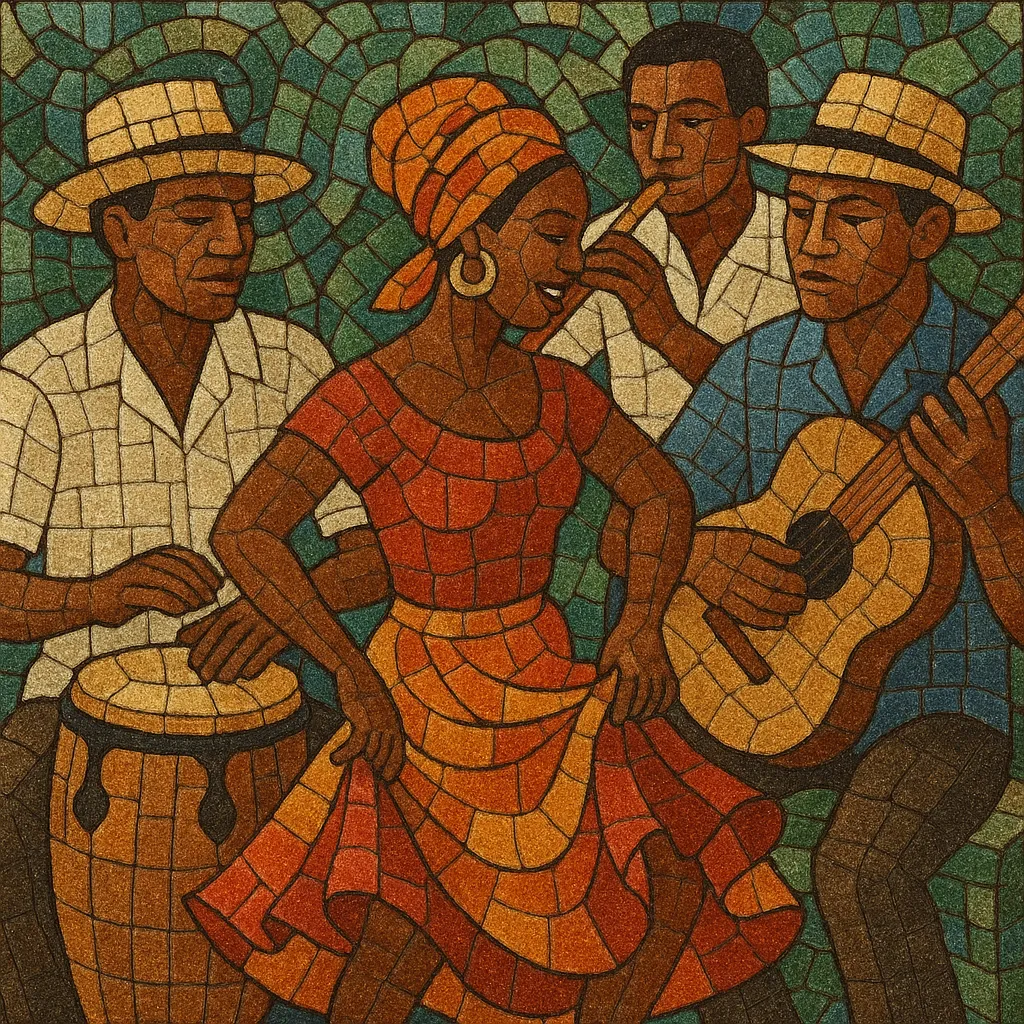Pilón is a Cuban dance rhythm and song style created in Oriente province at the end of the 1950s. Its name comes from the rhythmic, circular motion used to grind coffee in a mortar (pilón), which the dance playfully imitates.
Musically it sits in the charanga tradition (flute and violins over a rhythm section) but with a distinctly driving percussion feel: a prominent cowbell pattern locks with conga and timbales over son clave, while bass tumbaos and piano/tres guajeos create a propulsive montuno. Medium‑fast tempos, catchy coros (call‑and‑response refrains), and light, witty lyrics make the style festive and highly danceable.
Pilón emerged in Santiago de Cuba at the turn of the 1960s, credited primarily to percussionist-composer Enrique Bonne in collaboration with bandleader-singer Pacho Alonso. The rhythm drew inspiration from everyday life—the physical motion of pounding coffee in a pilón—and from the rich percussion language of Oriente (including conga santiaguera), while retaining the song structure and charanga orchestrations of son-based popular music.
Pacho Alonso y sus Bocucos popularized the style nationally with hits such as “El Pilón,” turning the rhythm into a short-lived but influential craze. Charanga orchestras across Cuba adopted the groove, featuring pronounced cowbell, animated coros, and dance figures that mimicked coffee grinding. The repertoire combined playful, streetwise lyrics with compact montuno vamps that showcased the new beat.
Although the initial pilón wave was brief, its percussive drive and bell-centric patterns fed directly into later Cuban innovations. Elements of pilón’s groove language can be heard in the rhythmic experimentation that led to songo in the late 1960s and, later, in the high-energy arrangements of timba. The style remains a touchstone in Cuban dance music history and appears periodically in revivals and repertoire of charanga and modern Cuban dance bands.


